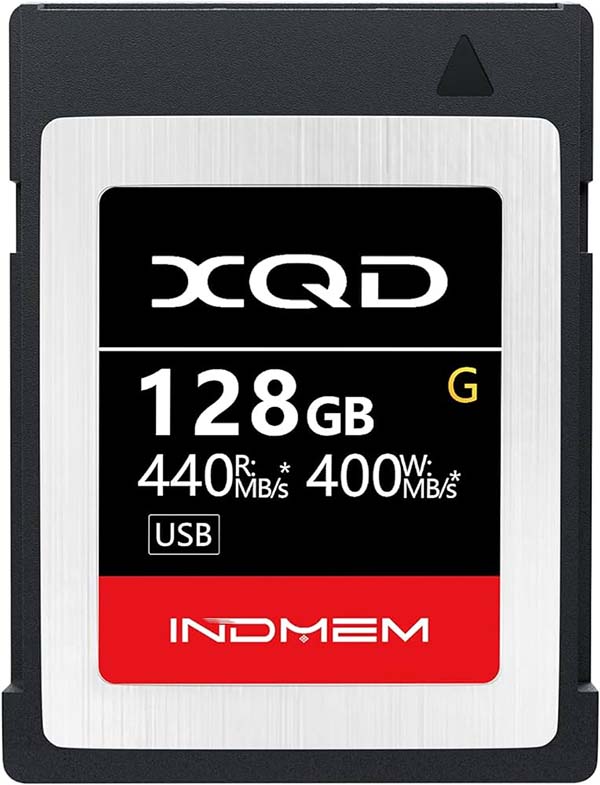PAGE CONTENT:
XQD cards are now required for professionals who need fast, reliable performance in the fast-paced world of digital video storage. It's important to know how to properly format and unformat your XQD cards, whether you're a shooter who wants to capture fleeting moments or a videographer who wants to record important footage. Formatting the card prepares it for the best use, ensuring it is compatible and works well. Unformatting, on the other hand, lets you get back data that you accidentally erased.
This complete guide details managing XQD cards and gives step-by-step directions for formatting and unformatting them. Each way is looked at in detail to help you keep your camera running at its best and keep your important data safe, from using the menu system on your camera to formatting on your computer.
Following these tips and tricks will make your XQD cards last longer and make your work easier in the tough world of professional photography and film.

Methods to Format XQD Card in Camera/Windows/macOS
Setting up your XQD card can be done in several ways, and each has its benefits:
- In-Camera Formatting:
In-camera editing is the easiest way to prepare the card because you can do it right from your camera's menu system. Find the formatting choices (the manual for your camera will tell you how to do this) and then follow the on-screen directions. You can use That quick and easy fix whenever you need it.
- Computer Formatting:
When you format on your computer, you have more power over the process. Connect the XQD card reader to your computer and use File Explorer (Windows) or Finder (macOS) to find the card. Find the card and right-click on it. Then, choose "format." Here, you can pick the file system (exFAT is suggested) and maybe even give the volume a name to make it easy to find.
- Software Formatting:
Some camera makers make software suites for handling their cameras and storage devices. These programs might have formatting tools and features like moving and backing up images. For specific directions, look at the software that comes with your camera.
Format XQD SD Card on Windows and macOS
You should make a copy of your important files before formatting the XQD card because formatting will delete everything on the card. Then use the steps below to set up your XQD card:
1. Format XQD card on Windows PC
Step 1: Hook up the XQD card to your computer.
Step 2: Open This PC and look for the XQD SD card. Right-click on it and pick "Format."

Step 3: Choose either FAT32 or ExFAT as the file system. If you need to, type in a new name and then hit the Start button to format the XQD card.

Setting up the SD card could take a short time, depending on its size. It will let you know when it's done, and then you can use the SD card.
2. Format XQD card on macOS
Step 1: Connect the XQD card to your Mac. Next, open the Disk Utility app by going to Launchpad > Other > Disk Utility.
Step 2: Click on the Sony SD card and then Erase.

Step 3: Choose ExFAT or MS-DOS (FAT) as the file system, then hit Erase again.

Step 4: Click the Done button when the process is done.

Note:
- The formatted data is not lost for good, you can use a XQD card data recovery program to unformat the XQD card and get all lost data back.
- If you will sell, donate or throw out an old XQD card, you can use data erasure program - such as Donemax Data Eraser to securely wipe the XQD card to permanently erase all data from it.
Recover Lost Data from XQD Card Which Has Been Formatted
Imagine formatting your XQD card by accident while it has important photos. There is software that can return lost info, but it's not always effective. Prevention is the best thing to do. However, if you do find yourself in this case, try these things:
Data Recovery Software:
Different kinds of software can retrieve lost information. These programs can sometimes get back lost files, but the chances of success rely on how badly the files were overwritten. Moving quickly and not adding new data to the card is important, as this can make recovery even less likely.
Professional Data Recovery Services:
You might want to use professional data recovery services if the data is very important. These services use special methods to get data back from storage devices. They can be pricey, though, and they don't always work.
💡Unformat XQD Card with Recovery Software
Donemax Data Recovery is the best program to use to get back files that have been formatted on an SD card. That is one of the best apps for getting data back from formatted SD cards. It works with various SD cards, like memory cards, micro SD cards, and more.
Donemax Data Recovery
- Recover deleted, formatted and lost data from XQD card and other devices.
- Recover lost data from corrupted XQD card.
- Repair damaged XQD card on PC and Mac.
Step 1. Select the drive.
You should connect the XQD card to your computer. Then download and install Donemax Data Recovery on your computer, open it. This data recovery software will show you all drives and connected devices. Just select the formatted XQD card to start data recovery.

Step 2. Scan the drive.
Click on Scan button to deeply scan the formatted XQD card and find all recoverable files.

Step 3. Recover deleted files.
Once the scan is completed, you can preview the recoverable files. Then select the wanted files, click on Recover button, choose a location to save the recovered files.

Best Practices for Formatting XQD Cards:
Follow these best practices to make sure your XQD cards last a long time and work at their best:
✦ Regular Formatting: Regularly Formatting your XQD cards will keep them running smoothly and stop file system failures.
✦ Avoid Formatting in Unreliable Conditions: Formatting your XQD cards should only be done when necessary and ideally in a stable environment to lower the risks.
✦ Backup Data: Back up your data often so you don't lose it if you accidentally format your card or the drive fails.
✦ Use Updated Firmware: Keep the firmware on your camera up to date to make sure that it works with XQD cards and to get speed improvements.
✦ Handle with Care: Do not drop or hit XQD cards or their gadgets. Always be careful not to hurt yourself.
Conclusion:
Photographers and filmmakers who use XQD cards must know how to format and unformat them. Knowing how it works and following best practices can make your XQD cards last longer and work better while keeping your important data safe.
Whether you format with a camera or a computer, you should always put data security first and follow the manufacturer's instructions for the best results. After following these steps, you should be able to handle your XQD cards well in any situation, whether at work or home.
Format and Unformat XQD Card FAQs
1. How to format XQD card on Windows PC?
Just connect the XQD card to your Windows PC, then open This PC. Right-click the XQD card, choose Format, then select a file system, click on Start button to start formatting the XQD card.
2. How to format XQD card on Mac?
- Connect the XQD card to your Mac.
- Go to Launchpad > Other > Disk Utility, open Disk Utility.
- Select the XQD card, click Erase.
- Select a file system, click Erase again.
- When it gets finished, click Done.
3. How to unformat XQD card?
- Download and install Donemax Data Recovery.
- Open Donemax Data Recovery, select the XQD card.
- Click on Scan button.
- Deeply scan the formatted XQD card.
- Preview and recover lost files.
4. What is the best software to recover formatted data from XQD card?
Here is the list of top 5 XQD card unformat software:
- Donemax Data Recovery
- Magoshare Data Recovery
- Recuva
- iBoysoft Data Recovery
- Stellar Data Recovery
Related Articles
- Jul 26, 2023External Hard Drive Not Recognized After Unplugging, Fix It
- Feb 05, 2025How to Fix Failed Seagate External Hard Drive?
- Dec 12, 20244 Methods to Fix Seagate External Hard Drive Read-Only on Mac
- Apr 02, 2024How to Fix Samsung SSD Not Showing Up Without Losing Data?
- Jan 04, 2024How to Use Samsung Portable SSD T9 for Windows and Mac?
- Dec 18, 2024How to Use SanDisk Professional G-DRIVE on Mac?

Coco Lin
Coco has been a writer and a chief programmer at Donemax software since 2018. Over 10 years of experience of writing troubleshooting articles in the software industry, she is passionate about programming and loves to providing solutions to Windows and Mac users. Also she enjoys music and palying tennis in her free time.

Gerhard Chou
In order to effectively solve the problems for our customers, every article and troubleshooting solution published on our website has been strictly tested and practiced. Our editors love researching and using computers and testing software, and are willing to help computer users with their problems